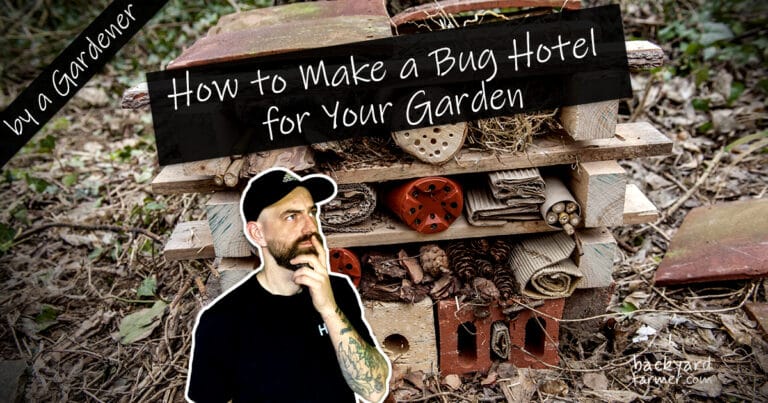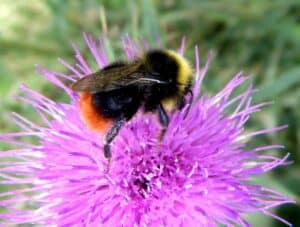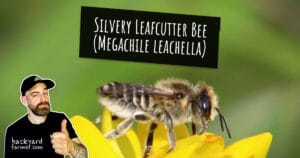Introduction: Why Make a Bug Hotel?
If you’re looking for a simple, rewarding way to support local wildlife, learning how to make a bug hotel is a great place to start.
A bug hotel—also known as an insect hotel—is a handmade shelter designed to help beneficial bugs thrive by mimicking their natural habitats.
These homemade shelters give bees, beetles, and other garden-friendly insects a safe spot to rest, nest, and hide—especially during colder months or rainy spells.
Why Bugs Matter
Insects play a crucial role in maintaining a healthy garden. Not only do they pollinate your plants, but they also eat pests like aphids and help keep the ecosystem in balance:
- They pollinate plants
- They control pests naturally
- They support a balanced ecosystem
The Good News
You don’t need special tools or expensive gear to build a bug hotel. In fact, most of the materials can probably be found in your garden or shed.
This is the perfect DIY bug hotel project to reuse natural materials and give bugs a boost.

Who Is This Guide For?
This guide is perfect if you’re:
- A keen gardener looking to boost biodiversity
- A parent searching for a fun and educational outdoor project
- Someone who simply wants to help nature thrive
You’ll learn exactly how to make a bug hotel using natural, recycled materials.
It’s an easy, eco-friendly activity that anyone can do.
What Is a Bug Hotel?
A bug hotel is a simple, artificial insect shelter built from natural materials to attract and protect garden-friendly bugs. Also known as an insect hotel, mini-beast lodge, or garden bug house, it gives insects a safe place to rest, nest, and hibernate.
Typically, these eco-friendly structures are made using natural or recycled materials like bamboo canes, pinecones, logs, dry leaves, and bricks. The goal is to recreate the nooks, crevices, and layers that bugs naturally seek out in the wild.
Bug hotels come in all shapes and sizes. Some are large and built from stacked wooden pallets, while others are small and simple—like a plastic bottle filled with twigs and hung in a tree. The beauty is that there’s no one-size-fits-all approach.
If you’re wondering what to put in a bug hotel, the answer is variety—offering a mix of textures and spaces helps attract more species.
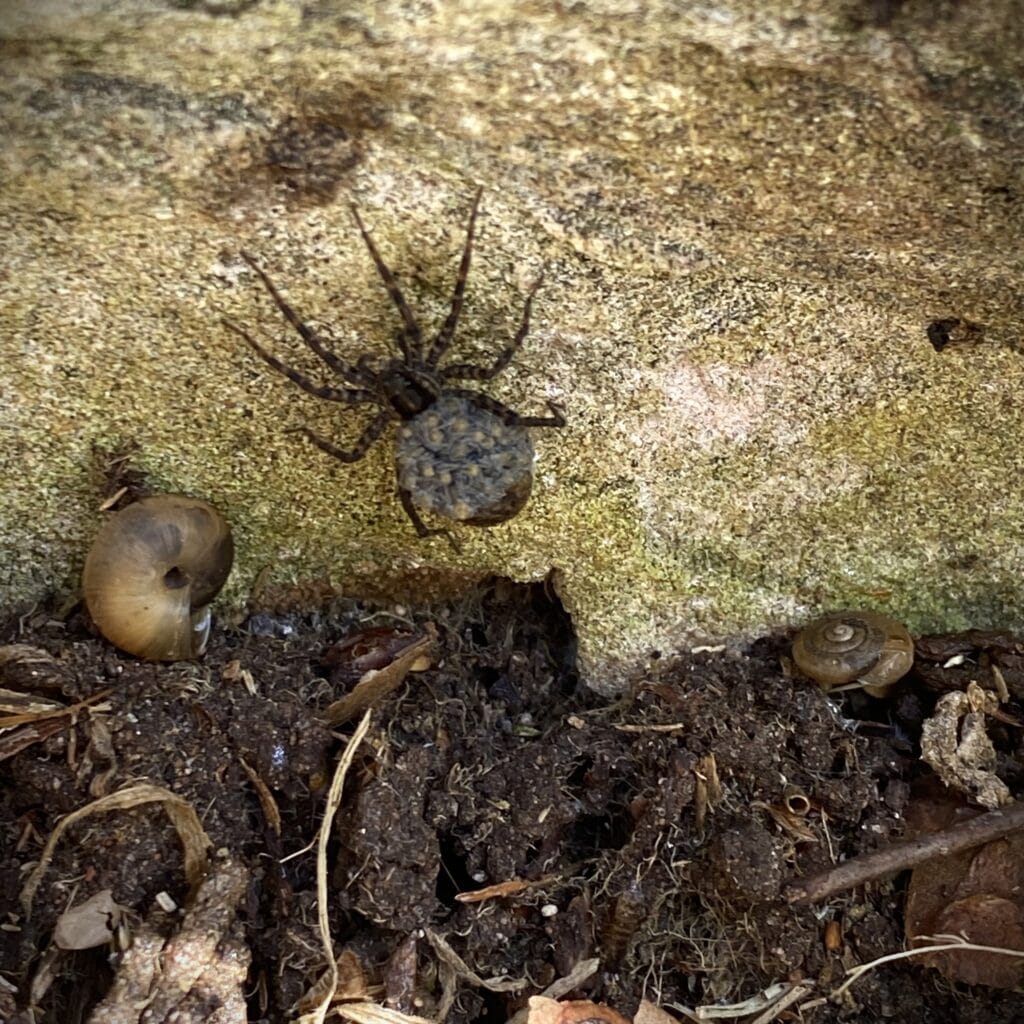
Common Insects You Might Attract
When placed in the right spot, a bug hotel can attract:
- Solitary bees
- Beetles
- Ladybirds (excellent for natural pest control)
- Spiders
- Butterflies
- Earwigs and lacewings
We’ll explore the best materials to use in the next section, but for now, think of your bug hotel as a bed-and-breakfast for bugs—and if you build it well, your tiny guests might just move in for good!
Benefits of a Bug Hotel
Building a bug hotel isn’t just a fun weekend project—it’s a small but powerful way to boost your local ecosystem.
Let’s take a look at why these little shelters make such a big difference:
1. Supports Pollinators
Solitary bees—like mason and leafcutter bees—depend on hollow stems and sheltered spots to build their nests. By adding a bug hotel (or insect hotel) to your garden, you’re creating a safe space for these essential pollinators. As a result, you’ll enjoy more flowers, fruits, and vegetables. One of the biggest benefits of a bug hotel is how it helps support declining bee species.
2. Helps with Natural Pest Control
Ladybirds, spiders, and lacewings are natural predators of garden pests like aphids, mites, and caterpillars. When you give them a place to stay, you’re helping to keep your garden healthy—without reaching for chemicals.
3. Encourages Biodiversity
Bug hotels offer refuge to a wide range of insects, many of which are struggling due to habitat loss. From beetles to butterflies, these structures support species that contribute to pollination, soil health, and overall ecological balance.
4. Educational and Fun for Kids
Bug hotels spark curiosity. Kids (and adults!) can observe who checks in and learn about insect life cycles, behaviours, and the roles bugs play in nature. It’s a brilliant hands-on learning opportunity.
5. A Sustainable Gardening Choice
Since most bug hotels are built using repurposed materials, they’re a fantastic way to reuse garden waste and reduce your environmental impact.
It’s a win for you—and for the planet.
In short, when you build a bug hotel, you’re doing far more than creating a quirky garden feature. You’re helping insects, encouraging natural balance, and turning your outdoor space into a thriving mini ecosystem.
Next Up: Let’s look at the best materials to build your own insect hotel at home.
What Materials to Use for Your Bug Hotel
To build a successful bug hotel, start with simple, natural materials—many of which you probably already have in your garden. The goal is to offer a mix of textures, shapes, and spaces that suit a wide variety of insects.
Recommended Materials and Their Uses
Here’s a handy guide to what works best:
| Material | Best For | Extra Tip |
| Bamboo canes | Solitary bees | Cut to 6″ lengths and bundle tightly |
| Pinecones | Ladybirds, beetles | Stuff into mesh frames or crates |
| Hollow stems | Mason bees, lacewings | Use dead sunflower or raspberry stems |
| Dead leaves | Beetles, worms | Layer loosely in sheltered spots |
| Straw or hay | Butterflies, moths | Keep dry for best results |
| Bark or twigs | Spiders, woodlice | Create gaps and layers for hiding |
| Bricks with holes | Solitary bees | Place in sunny, dry locations |
| Rotting wood | Beetles, centipedes | Keep slightly damp but out of full rain |
What to Avoid
Steer clear of plastics or anything painted or chemically treated. Also skip glossy paper, synthetic fibres, or fabrics that could trap moisture and grow mold.
Top Tip
Keep it varied! The more types of materials you use, the more kinds of insects you’ll attract. Think of your bug hotel as a little apartment block—each bug is looking for a different type of room.
And don’t forget, upcycling old items like terracotta pots, bird boxes, or wooden crates not only adds charm but also helps keep your build eco-friendly and budget-friendly.
Next Up: We’ll look at the best places to position your insect hotel for maximum impact.
Where to Put a Bug Hotel in Your Garden
When it comes to attracting the right guests to your bug hotel, location makes all the difference. Since different insects have different needs, finding the ideal location for your bug hotel will determine who checks in.
Best Locations by Insect Type
For Solitary Bees (like mason or leafcutter bees):
- Position the bug hotel in a sunny, south-facing location
- Mount it at least 1 metre off the ground
- Attach it securely to a wall, fence, or sturdy post
For Other Insects (like beetles, spiders, and woodlice):
- Opt for a shady, cool, and slightly damp area
- Ideal places include behind a shed, near a compost heap, or under a bush or tree
- Keep it at ground level to support ground-dwelling insects
Tips for All Placements
- Choose a spot that’s sheltered from wind and rain
- Place your hotel near flowers or plants to encourage insect activity
- Once placed, leave it undisturbed—bugs prefer a quiet stay!
Not Sure Where to Put It? Try a Few!
There’s no single perfect place. Instead, try building a few small bug hotels and position them in different areas of your garden. This way, you’ll attract a broader range of insects and learn which spots work best. This applies whether you’re placing a bug hotel or a bee hotel in your garden.
With the right placement, your bug hotel will soon be a bustling little hub of garden life.
Next Up: Once you’ve chosen your spot, it’s time to start building your insect hotel—step by step.
While bug-friendly gardens are great, not all plants are welcome. Here’s how to deal with ground elder — a common invasive you’ll want gone.
How to Make a Bug Hotel – Step-by-Step
So, you’re ready to build your bug hotel? Great choice! Follow these easy steps to create a cozy shelter for your garden’s tiny visitors. Whether you go big or small, rustic or refined, the goal is to give insects a safe and inviting space to call home.

Step 1: Choose a Frame
Start by picking a sturdy frame from items you already have around. Great options include:
- Wooden crates or wine boxes
- Stacked bricks or pallets
- Old bird boxes with the front removed
- Terracotta pots laid on their side
Step 2: Add Structure with Layers
Next, use bricks, logs, or stones to divide your frame into sections. These compartments add support and create little hideaways for your chosen materials.
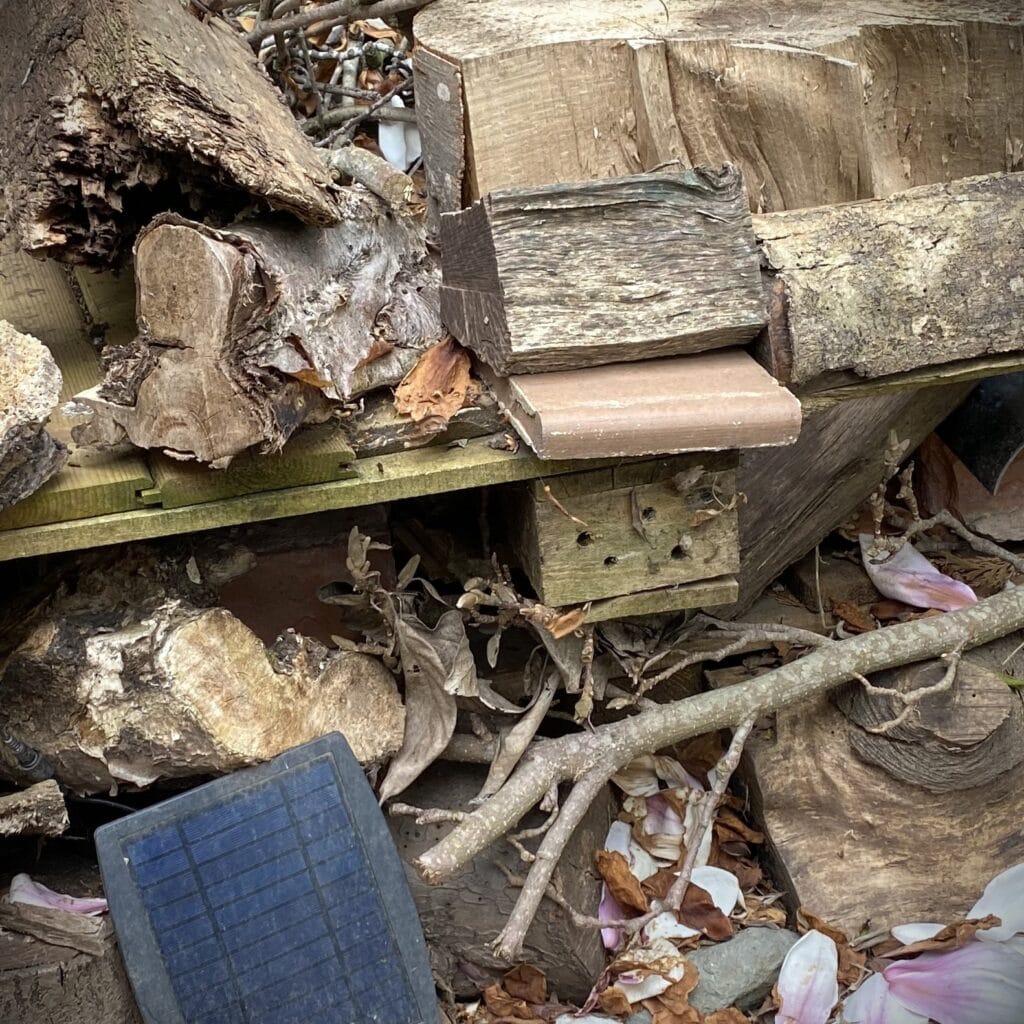
Step 3: Fill with Natural Materials
Now comes the fun part—filling your hotel! Use a variety of natural items to attract different insects:
- Bamboo and hollow stems for bees
- Pinecones and straw for beetles and ladybirds
- Dry leaves and bark for worms and spiders
Make sure everything is snug enough to stay in place, but loose enough for bugs to crawl in and out comfortably.

Step 4: Position Your Bug Hotel
Choose the best location based on your target guests (refer back to the placement section for tips).
For bees, raise it off the ground and face it toward the sun.
For ground-dwelling bugs like beetles and worms, pick a shady corner at soil level.
Step 5: Leave It Be
Once your bug hotel is in place, leave it undisturbed. It may take a little time for bugs to move in, but once they do, you’ll start to see life buzzing around—especially in spring and autumn.
And that’s it! Your bug hotel is officially open for business. Keep an eye out over the coming weeks—you might be surprised who decides to check in!
What Insects Will Use a Bug Hotel?
Bug hotels attract a variety of helpful insects, and each one plays a unique role in keeping your garden healthy. By offering them a place to shelter, you’re actively supporting biodiversity and giving nature a much-needed boost.
Wondering what bugs live in a bug hotel? Here are some of the most common guests you can expect to welcome:

Solitary Bees
- Includes mason bees and leafcutter bees
- Prefer bamboo canes, drilled wood, and hollow stems
- Vital pollinators—especially for fruit trees and vegetables
To help identify the visitors checking in, check out our handy bee identification guide and get to know the pollinators in your garden.
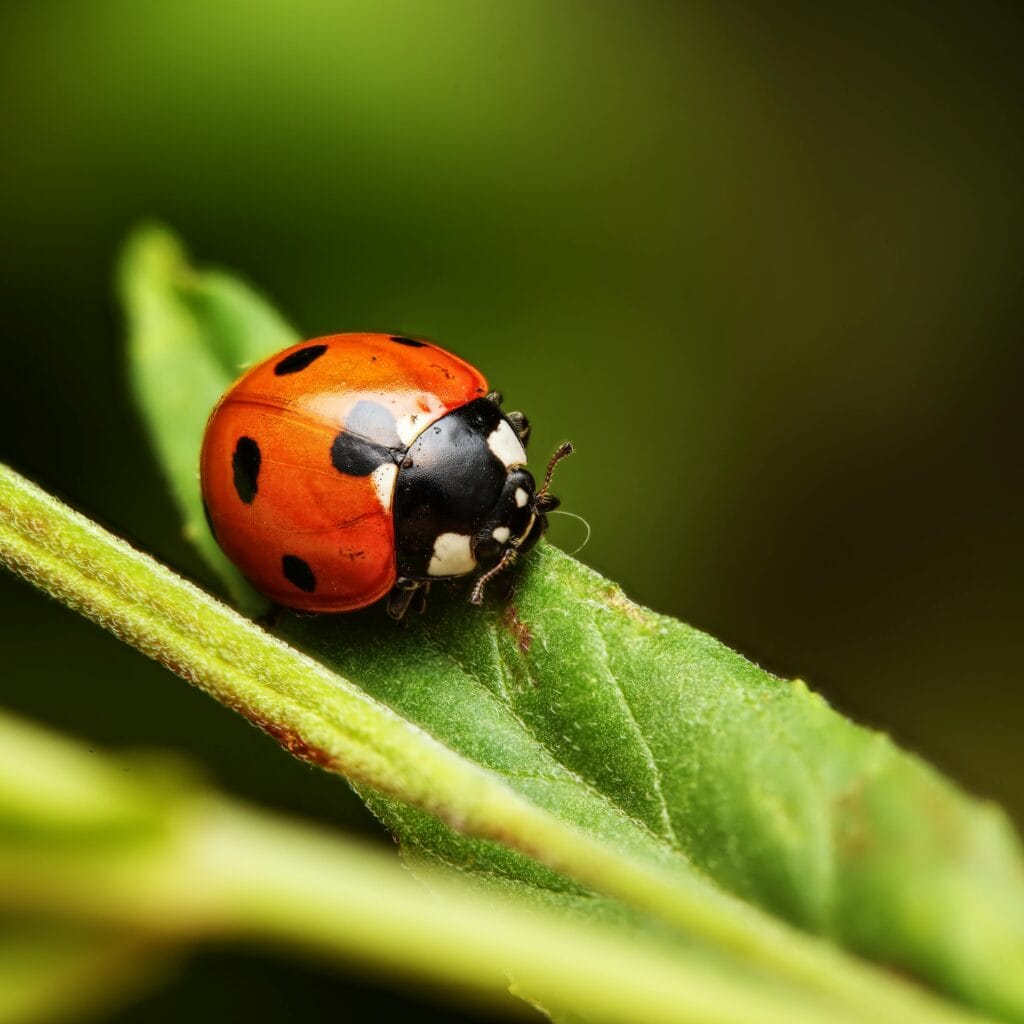
Ladybirds
- Feed on aphids and other soft-bodied pests
- Often nest in straw, leaves, or pinecones
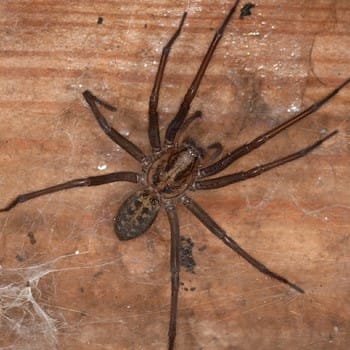
Spiders
- Fantastic natural pest controllers
- Like to hide in crevices, bark, and dry leaves
Butterflies & Moths
- Seek shelter during bad weather and to overwinter
- Prefer dry, protected areas filled with bark or twigs
Beetles
- Help break down decaying organic matter
- Thrive in damp logs and rotting wood
Worms & Woodlice
- Improve soil health and structure
- Live in leaf litter, compost, and moist hiding spots
Lacewings & Earwigs
- Lacewings devour aphids
- Earwigs break down plant debris (and yes, sometimes nibble on leaves!)
Top Tip
The more varied your materials, the more species you’ll attract. Think of your bug hotel—or insect hotel—like a nature apartment block. Each insect has its own preference, so variety is key.
From pollination to pest control and soil improvement, these insects play essential roles in your garden’s success. By building a bug hotel, you’re doing far more than offering shelter—you’re creating a thriving mini ecosystem just outside your door.
Next Up: Ready to get the kids involved? Let’s explore some fun bug hotel ideas perfect for younger nature lovers.
Bug Hotel Ideas for Kids
Getting kids excited about nature is easy when you give them something hands-on and creative to build. A bug hotel for kids is the perfect project—it’s messy, fun, and fits beautifully into science lessons or outdoor learning.
Plus, who doesn’t love an excuse to dig around in the garden?
Simple, Kid-Friendly Bug Hotel Projects
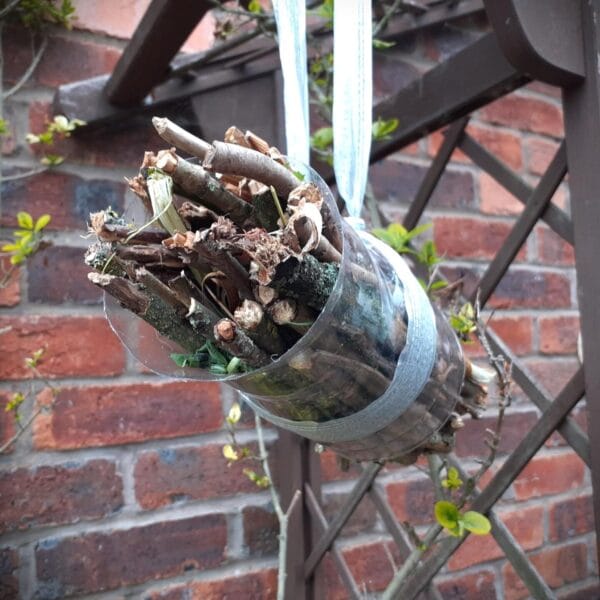
Bottle Bug Hotel
- Start with a clean plastic bottle and cut off both ends
- Fill it with bamboo, twigs, and rolled-up cardboard
- Use string to hang it in a bush or low tree branch
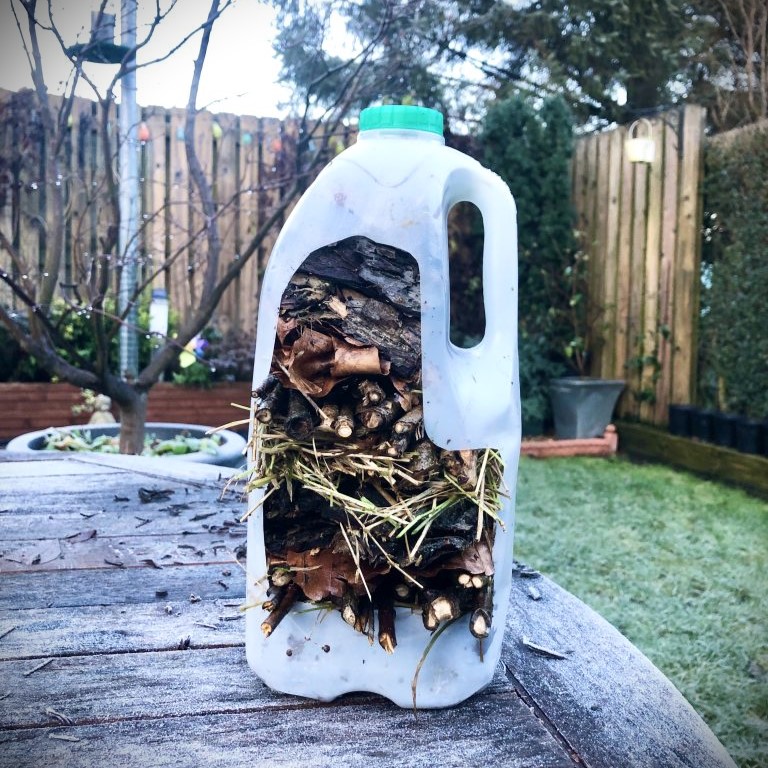
Milk Carton Mansion
- Rinse and dry an old milk carton
- Cut one large side open to create the entrance
- Stuff it with leaves, pinecones, and bits of grass
- Decorate the outside with non-toxic paints or markers
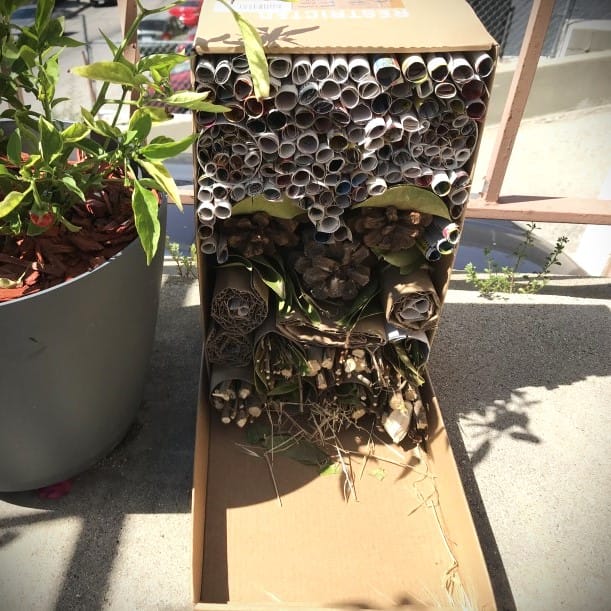
Shoebox Shelter
- Find a shoebox or small cardboard box
- Poke a few holes in the sides for airflow
- Fill it with sticks, shredded paper, and bark
- Place it in a dry, sheltered spot in the garden

Pallet Stack Project
- Ideal for older kids or group activities
- Stack 2–3 small wooden pallets
- Fill the gaps with different natural materials
- Add bug ID labels or signs for a fun educational bonus
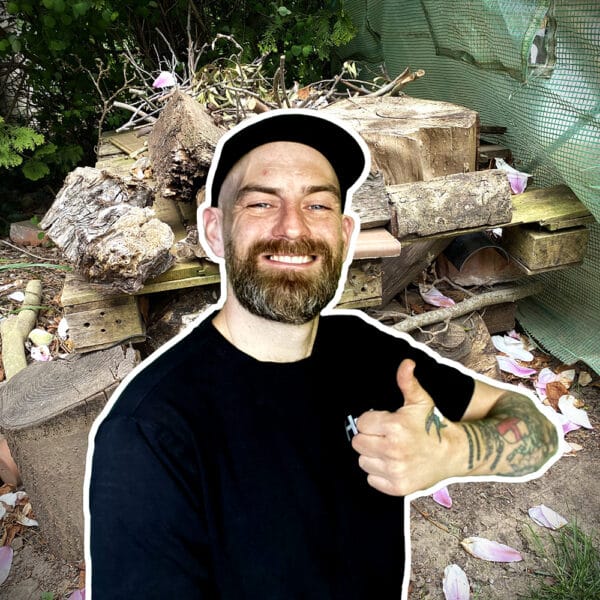
Learning Outcomes
- Explore bug habitats and life cycles
- Develop fine motor skills and problem-solving abilities
- Foster curiosity and respect for wildlife
Why These Projects Work
Each bug hotel for kids can be made from recycled household items, making them ideal for home or school use. These easy bug hotel projects for children also provide a great opportunity to teach sustainability and encourage hands-on learning. You can even refer to them as an insect hotel or mini beast lodge to tie into curriculum language.
These DIY projects are perfect for classrooms, garden clubs, or rainy weekend activities. Encourage kids to check their hotels regularly and keep a nature journal of the creepy crawlies they discover!
Next Up: Got questions? Let’s answer the most common ones about bug hotels.
For even more ways to support the bugs that keep your garden thriving, check out the RHS guide to encouraging beneficial insects.
Composting & Wildlife: A Natural Partnership
If you want to create a thriving, wildlife-friendly garden, composting and bug hotels make the perfect team. Both provide vital shelter, food, and habitat for garden critters—and when combined, their impact grows even greater.
This natural pairing is one of the easiest ways to attract wildlife to your garden with compost and bug hotels.
Compost Heaps Attract Insects ♻️
Think of a compost heap as a buffet for bugs. It draws in worms, beetles, woodlice, springtails, and other essential decomposers.
These insects break down organic matter, enriching your soil with nutrient-rich compost.
Compost Supports Bug Hotel Visitors 🌱
Many of the same bugs that thrive in compost heaps also take shelter in bug hotels—or insect hotels—especially during colder months. Spiders, beetles, and ants often travel between both spaces, creating a mini-ecosystem right in your backyard.
Wildlife Benefits 🦔
Not only do these habitats support insects, but they also attract their natural predators—like frogs, hedgehogs, and birds. As a result, you’ll increase biodiversity and enjoy natural pest control, especially against slugs and caterpillars.
Leave an Entrance for Nocturnal Guests 🚪
At night, hedgehogs and other nighttime visitors come out to forage. By leaving a small gap in your garden fence or hedge, you create an open invitation for them to access your compost and bug hotel.
Quick Tip 🌡️
Avoid turning your compost too frequently in winter, as it may disturb insects seeking warmth inside.
By working together, composting and bug hotels build a self-sustaining environment. It’s one of the simplest and most effective ways to support insects, encourage wildlife, and grow a healthier garden.
Next Up: We’ll wrap up with a quick recap and some final thoughts to get your garden buzzing.
FAQs About Bug Hotels
Yes, they do! When placed in the right location and filled with suitable materials, bug hotels offer essential shelter for a wide variety of insects. You might not see results immediately, but activity usually picks up in spring and autumn.
That depends on the type of insects you want to attract:
For bees: position the hotel at least 1 metre off the ground, facing south for warmth
For beetles and worms: place it directly on the ground in a cool, shady spot
Definitely! Coconut shells make excellent natural shelters—especially when filled with straw or moss. Just keep them dry and away from heavy rainfall.
If you’re wondering how to maintain a bug hotel through the seasons, the answer is simple: leave it exactly where it is. Many insects use bug hotels—or insect hotels—to hibernate, so moving or disturbing them could cause harm. Just make sure it stays protected from strong winds and heavy rain.
Usually, you don’t need to. Let nature do its thing. However, if parts become moldy or clogged, you can gently refresh the materials in early spring.
Be patient. Bugs can be picky! Make sure your hotel is in a quiet, sheltered area with a good mix of natural materials. Adding nearby flowers can also help attract more visitors.
Pro Tip 🌼
Plant native, pollinator-friendly flowers around your bug hotel to increase its appeal and create a welcoming environment for all kinds of beneficial insects.
Next Up: Want to go even further? Let’s explore how bug hotels and composting work together to support your garden.
Conclusion
Building a bug hotel is one of the easiest and most rewarding ways to support local wildlife—right in your own backyard.
With just a few natural materials and a dash of creativity, you can create a safe haven for pollinators, pest controllers, and decomposers—all of which are key to a thriving garden.
It’s also one of the simplest ways to turn your garden into a wildlife habitat while attracting beneficial insects.
Quick Recap
Here’s a quick summary of what you’ve learned:
- Bug hotels attract bees, beetles, spiders, and more
- They’re made using natural or recycled materials
- Placement matters—sunny for bees, shady for beetles
- They work beautifully alongside composting and wildlife-friendly practices
- Kids love them, and they make great hands-on learning tools
Final Thoughts
The best part? You don’t need to be a pro gardener to make a real impact. A few small changes—like building a bug hotel or insect hotel—can transform your garden into a buzzing, blooming wildlife sanctuary.
So go ahead: gather some sticks, stack up that bamboo, and open your doors to nature. Your garden will thrive—and the bugs will thank you for it!

